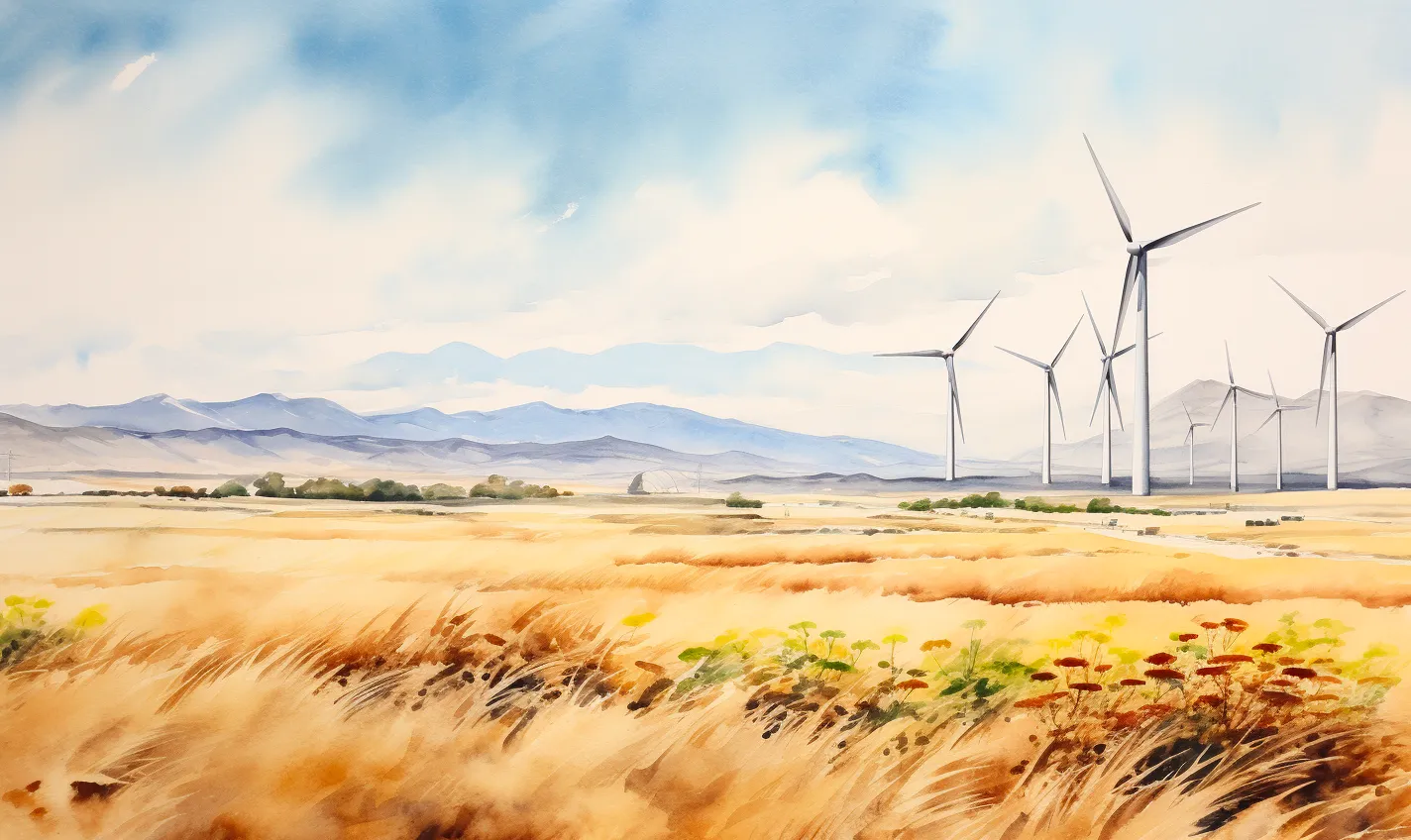An Ecological Civilization is the renaissance we’ve been waiting for | One Earth
An Ecological Civilization is the renaissance we’ve been waiting for One Earth


Sustainable Development Goals (SDGs) and the Need for an Ecological Civilization
Many see the Industrial Revolution as its own kind of Renaissance, which enabled, over the past 300 years, an accumulation of wealth that the world has never before seen. Yet, industrialization and the fossil fuels that aided its growth did not come without a price. As a recent report warns, six of nine planetary boundaries have been exceeded. This unprecedented material abundance is only enjoyed by some, yet has polluted and put at risk the whole world’s air, rivers, oceans, forests, and food, and has caused two of humanity’s largest crises: climate change and biodiversity loss. The era of the industrial civilization is foreclosing on itself, and many are now pointing to the need for an ecological civilization to take its place. This would be a true Renaissance, where human and ecological flourishing alike are at the center of everything we do.
Before industrialization, humanity existed in an agricultural civilization where productivity was low, and people were organized around meeting basic needs. The industrial civilization ushered in a new high-productivity era that inevitably affected peoples’ values, lifestyles, beliefs, and the institutions that governed them. An ecological civilization will similarly necessitate a major paradigm shift. As Jeremy Lent asserts in What Does An Ecological Civilization Look Like? we need “a transformation in the way we make sense of the world, and a concomitant revolution in our values, goals, and collective behavior.”
From Latin, ecology means “knowledge of home,” and ecological means the “applied knowledge of home.” While the old industrial system is characterized by an indifference to how life on this planet works, an ecological civilization operates with ecological principles at its core—with behaviors, values, goals, and institutions organized around the applied knowledge of life on Earth.
In her book, Biomimicry: Innovation Inspired by Nature, Janine Benyus outlines some of Life’s Principles here on Earth:
Inspired by Benyus’ Life’s Principles and the work of sustainable development scholar, Jiahua Pan, One Earth has created six ingredients for an ecological civilization.
Six Ingredients for an Ecological Civilization

Image credit: Spencer R. Scott
1. Renewable Energy & Energy Efficiency
With few exceptions, life on Earth runs on energy from the sun, either directly in the case of plants or indirectly in the case of animals and fungi. In times of plenty, all living things learn to chemically store energy to ride out times of need. An ecological civilization will operate on a similar strategy, using 100% renewable energy aided by storage to buffer the intermittent nature of solar and wind. A civilization based on a finite energy source such as fossil fuels exposes itself to all sorts of risks. Increasingly, the renewable energy transition is being seen not just as a win for the environment but also as a way to ensure a more resilient and local source of energy.
Just as life wastes nothing, citizens of the ecological civilization will use energy much more wisely, adopting new technologies and behaviors to minimize their energy needs while optimizing their quality of life. As the IPCC highlights in its Sixth Assessment Report, lowering demand through efficiency measures would “significantly reduce” the challenge of reaching net zero emissions overall, lower pressure on land, and decrease our dependence on unproven technologies like carbon capture. The better we are at efficiency, the easier the energy transition and creating an ecological civilization will be.
Sustainable Urbanization. Image credit: Spencer R. Scott

2. Sustainable Urbanization
A notable shift brought on by industrialization was the urbanization of humanity. Nearly all of humanity lived in rural areas before the 1700s; now, over 55% of people live in cities, a number that will likely continue to rise. While density has its environmental benefits, the rapid urbanization of humanity has been rife with environmental impacts. An ecological civilization will construct cities and the transportation systems within and between them in such a way that they enhance surrounding ecosystems instead of degrading them.
Renewable public transit, walkable cities, pollinator pathways, biomaterials, and
SDGs, Targets, and Indicators
-
SDGs Addressed or Connected to the Issues
- SDG 7: Affordable and Clean Energy
- SDG 9: Industry, Innovation, and Infrastructure
- SDG 11: Sustainable Cities and Communities
- SDG 12: Responsible Consumption and Production
- SDG 13: Climate Action
- SDG 14: Life Below Water
- SDG 15: Life on Land
- SDG 16: Peace, Justice, and Strong Institutions
- SDG 17: Partnerships for the Goals
-
Specific Targets Based on the Article’s Content
- Target 7.2: Increase substantially the share of renewable energy in the global energy mix
- Target 9.4: Upgrade infrastructure and retrofit industries to make them sustainable
- Target 11.3: Enhance inclusive and sustainable urbanization and capacity for participatory, integrated, and sustainable human settlement planning and management
- Target 12.2: Achieve sustainable management and efficient use of natural resources
- Target 13.1: Strengthen resilience and adaptive capacity to climate-related hazards and natural disasters
- Target 14.2: Sustainably manage and protect marine and coastal ecosystems to avoid significant adverse impacts
- Target 15.1: Ensure conservation, restoration, and sustainable use of terrestrial and inland freshwater ecosystems
- Target 16.7: Ensure responsive, inclusive, participatory, and representative decision-making at all levels
- Target 17.16: Enhance the global partnership for sustainable development
-
Indicators Mentioned or Implied in the Article
- Indicator 7.2.1: Renewable energy share in the total final energy consumption
- Indicator 9.4.1: CO2 emissions per unit of value added
- Indicator 11.3.1: Ratio of land consumption rate to population growth rate
- Indicator 12.2.1: Material footprint, material footprint per capita, and material footprint per GDP
- Indicator 13.1.1: Number of deaths, missing persons, and directly affected persons attributed to disasters per 100,000 population
- Indicator 14.2.1: Proportion of national exclusive economic zones managed using ecosystem-based approaches
- Indicator 15.1.1: Forest area as a proportion of total land area
- Indicator 16.7.1: Proportions of positions in public institutions (national and local legislatures, public service, and judiciary) compared to national distributions by sex, age, persons with disabilities, and population groups
- Indicator 17.16.1: Number of countries reporting progress in multi-stakeholder development effectiveness monitoring frameworks that support the achievement of the SDGs
Table: SDGs, Targets, and Indicators
| SDGs | Targets | Indicators |
|---|---|---|
| SDG 7: Affordable and Clean Energy | Target 7.2: Increase substantially the share of renewable energy in the global energy mix | Indicator 7.2.1: Renewable energy share in the total final energy consumption |
| SDG 9: Industry, Innovation, and Infrastructure | Target 9.4: Upgrade infrastructure and retrofit industries to make them sustainable | Indicator 9.4.1: CO2 emissions per unit of value added |
| SDG 11: Sustainable Cities and Communities | Target 11.3: Enhance inclusive and sustainable urbanization and capacity for participatory, integrated, and sustainable human settlement planning and management | Indicator 11.3.1: Ratio of land consumption rate to population growth rate |
| SDG 12: Responsible Consumption and Production | Target 12.2: Achieve sustainable management and efficient use of natural resources | Indicator 12.2.1: Material footprint, material footprint per capita, and material footprint per GDP |
| SDG 13: Climate Action | Target 13.1: Strengthen resilience and adaptive capacity to climate-related hazards and natural disasters | Indicator 13.1.1: Number of deaths, missing persons, and directly affected persons attributed to disasters per 100,000 population |
| SDG 14: Life Below Water | Target 14.2: Sustainably manage and protect marine and coastal ecosystems to avoid significant adverse impacts | Indicator 14.2.1: Proportion of national exclusive economic zones managed using ecosystem-based approaches |
| SDG 15: Life on Land | Target 15.1: Ensure conservation, restoration, and sustainable use of terrestrial and inland freshwater ecosystems | Indicator 15.1.1: Forest area as a proportion of total land area |
| SDG 16: Peace, Justice, and Strong Institutions | Target 16.7: Ensure responsive, inclusive, participatory, and representative decision-making at all levels | Indicator 16.7.1: Proportions of positions in public institutions (national and local legislatures, public service, and judiciary) compared to national distributions by sex, age, persons with disabilities, and population groups |
| SDG
Behold! This splendid article springs forth from the wellspring of knowledge, shaped by a wondrous proprietary AI technology that delved into a vast ocean of data, illuminating the path towards the Sustainable Development Goals. Remember that all rights are reserved by SDG Investors LLC, empowering us to champion progress together. Source: oneearth.org
Join us, as fellow seekers of change, on a transformative journey at https://sdgtalks.ai/welcome, where you can become a member and actively contribute to shaping a brighter future.
|








